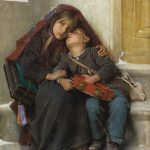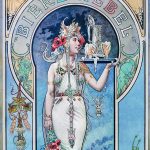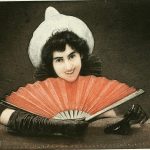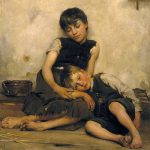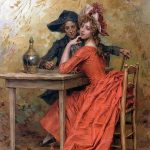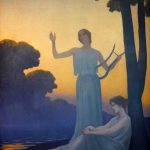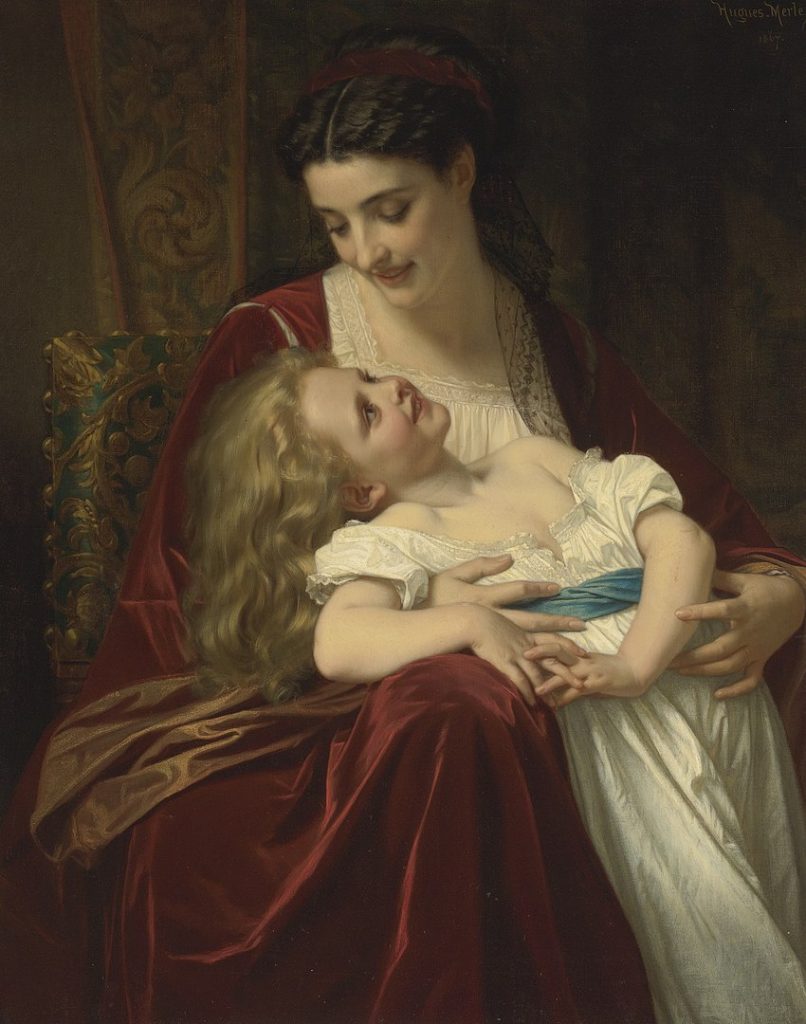
Hugues Merle, a French Academic painter of the 19th century, was born on June 28, 1823, in Saint Martin, near Cherbourg. Little is known about his early life and education, but his artistic talents became evident early on. Merle’s journey into the world of art took shape against the backdrop of the Romantic era and the emergence of the Academic style that would characterize much of his work.
Merle’s artistic aspirations led him to Paris, the epicenter of the art world during the 19th century. In the early 1840s, he began his formal artistic training at the studio of Léon Cogniet, a respected academic painter. Under Cogniet’s guidance, Merle developed his skills and absorbed the academic principles that would later define his oeuvre.
Dynamic Artistic Landscape
The mid-19th century in France was marked by a dynamic artistic landscape, with the Academic style prevailing in official art circles. Merle embraced the Academic tradition, characterized by its emphasis on classical subjects, meticulous technique, and a focus on historical or allegorical narratives. His commitment to this style became a hallmark of his career, setting him apart in an era dominated by diverse artistic movements.
Hugues Merle’s early works garnered attention for their technical proficiency and emotional resonance. His paintings often depicted sentimental or moralizing themes, aligning with the prevailing taste of the time. One of his notable early works, “The First Sorrow” (1847), exemplified his ability to evoke deep emotions through carefully rendered facial expressions and subtle use of color.
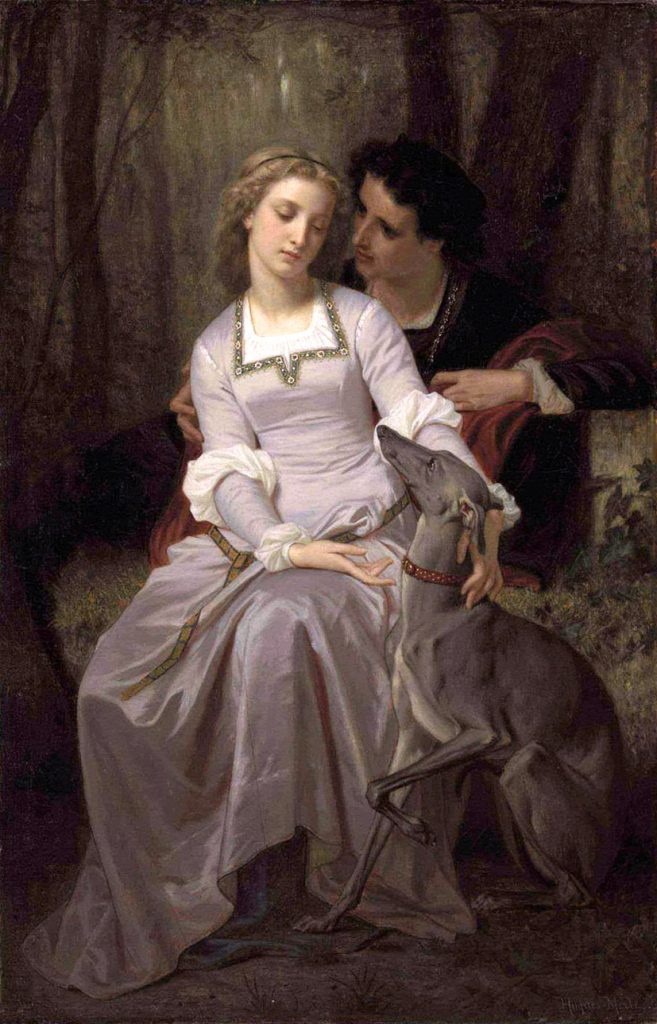
The 1850s marked a period of artistic maturation for Merle. His reputation grew as he exhibited regularly at the Paris Salon, the prestigious annual art exhibition that showcased the best of French art. Merle’s paintings, with their delicate handling of light, meticulous detail, and emotional depth, found favor among critics and patrons alike.
Merle’s thematic repertoire expanded beyond pure sentimentality. His interest in historical and biblical subjects became more pronounced, and he produced notable works such as “Mary Magdalene in the Cave” (1850) and “Charity” (1855). These paintings showcased his adeptness at combining classical themes with a heightened emotional expressiveness, a characteristic that endeared him to the Academic establishment.
The artist’s popularity extended beyond France, and his works were sought after by collectors in Europe and the United States. Merle’s success allowed him to travel and exhibit internationally, further solidifying his position in the art world. His painting “The Scholar” (1864) received acclaim when exhibited at the Royal Academy in London, demonstrating the cross-cultural appeal of his work.
Merle’s commitment to Academic principles did not preclude experimentation within the bounds of the style. His paintings often featured nuanced compositions, rich symbolism, and a careful balance between realism and idealism. “The Bride” (1865) is a prime example, where Merle explored the theme of marriage with a delicate touch, incorporating subtle allegorical elements.
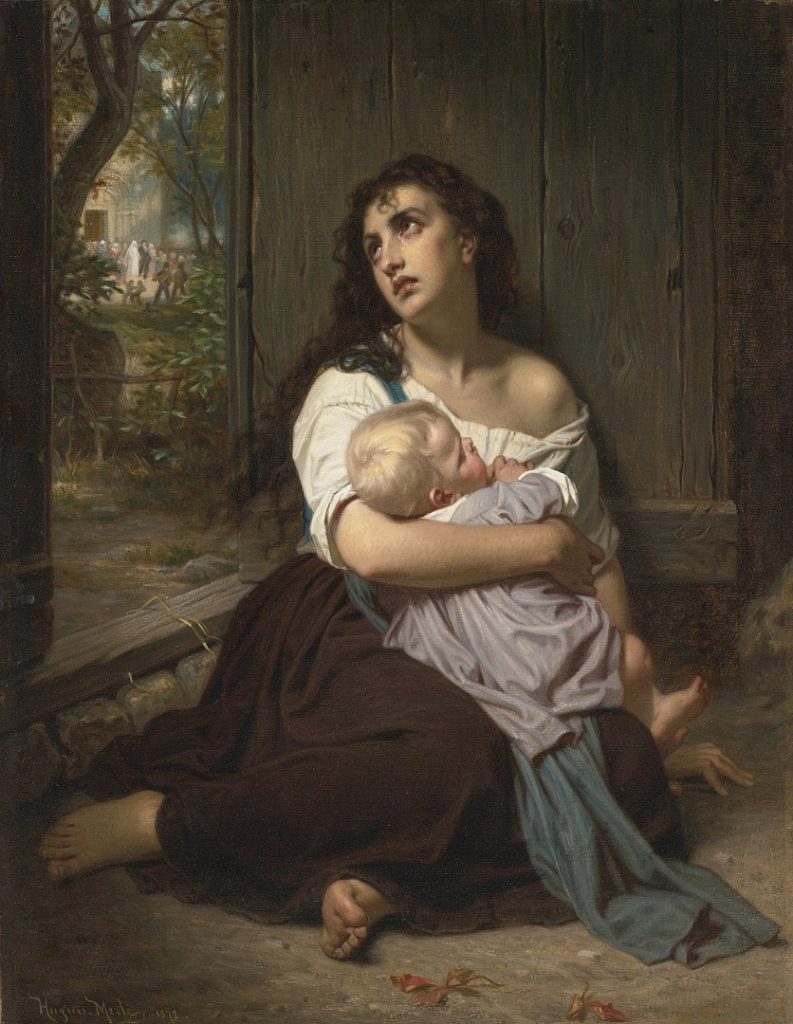
In the latter part of the 19th century, Merle continued to evolve as an artist while maintaining his dedication to Academic traditions. His thematic range expanded to include scenes from contemporary life, and he produced genre paintings that captured the nuances of everyday existence. “The Rest” (1871) exemplifies this shift, depicting a moment of repose in a domestic setting with an emphasis on naturalism.
Merle’s personal life also underwent significant changes during this period. In 1869, he married Louise Boulanger, a talented painter in her own right. The couple’s artistic partnership flourished, with Louise often serving as a model for Hugues’s works. Their collaboration is evident in paintings such as “The Morning Prayer” (1873), where familial harmony and religious devotion are portrayed with a warm, intimate touch.
Effects of War
The Franco-Prussian War of 1870-1871 and the subsequent Commune had a profound impact on Paris and its artistic community. Merle, like many of his contemporaries, faced the challenges and disruptions brought about by these tumultuous events. Nevertheless, he continued to create poignant works that reflected the resilience of the human spirit amidst adversity.
As the 19th century drew to a close, Merle’s paintings continued to find favor among collectors and art enthusiasts. His participation in international exhibitions, including the Exposition Universelle in Paris (1878) and the World’s Columbian Exposition in Chicago (1893), further solidified his reputation on the global stage.
Hugues Merle’s artistic career spanned several decades, witnessing the evolution of art movements and shifting tastes. His commitment to Academic principles, combined with a willingness to adapt and experiment, contributed to the longevity of his success. The artist’s legacy endures through his extensive body of work, which reflects not only the technical prowess of Academic painting but also a genuine sensitivity to the human experience.
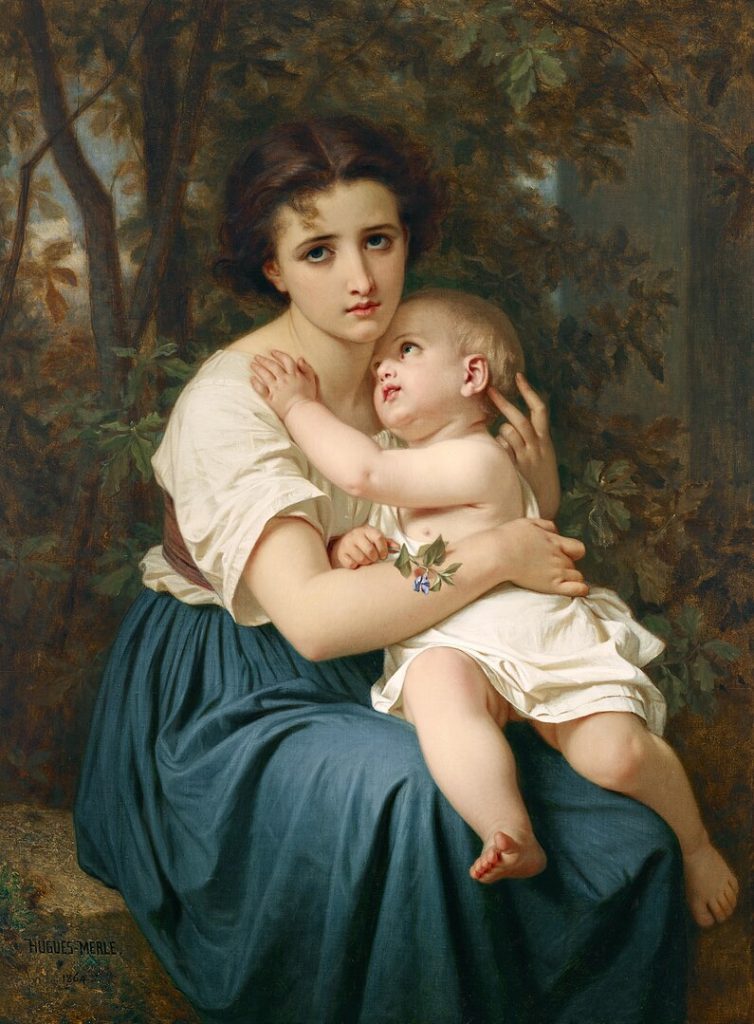
Hugues Merle passed away on March 28, 1881, leaving behind a legacy that resonates with the enduring allure of Academic art. His paintings, characterized by their emotional resonance, technical skill, and thematic diversity, continue to captivate art enthusiasts and serve as a testament to the artistic achievements of 19th-century France.

